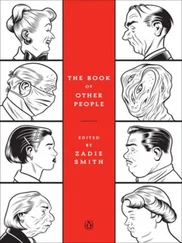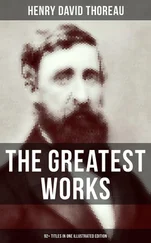DUKE OF MONMOUTH
This English rebel was beheaded in 1685 in one of history’s messiest executions (it took ‘five chopps’). The body and head were dispatched for burial, but at the last moment it was realised that no portrait existed of the duke. Since he had been the out-of-wedlock son of King Charles II, it was considered important to have one painted. Body and head were returned, sewn back together, dressed — and finally painted. The portrait hangs in the National Portrait Gallery, London.
CHARLES BYRNE
This Irish giant lived from 1761 to 1783. He feared that his huge body would be dissected for study, so he paid a group of friends to bury him at sea. But the famous anatomist, John Hunter, who owned a collection of human oddities, was not to be cheated. When Byrne died, Hunter bribed the friends to deliver the body to him. He immediately set about boiling the remains before anyone discovered what had happened. The speed with which he boiled the bones turned them brown. Hunter kept his acquisition secret for more than two years but finally put it on display. Byrne can still be seen in the Hunter Museum at the Royal College of Surgeons in London.
‘THE PRESERVED LADY’
Martin van Butchell was an English eccentric who lived from 1735 to 1812. In his marriage contract there was a clause stating he could own certain articles only ‘while [his wife] remained above ground’. When she died, he retained title to the property by having her embalmed, dressed in her wedding clothes and placed in a glass-topped case in his drawing room. ‘The Preserved Lady’ became a great attraction, with Butchell always introducing her as ‘My dear departed’. When he remarried, his new wife — irritated by the competition — insisted the corpse be removed. In keeping with the provision that she remain above ground, Butchell presented her to the Royal College of Surgeons, where she remained on public view until she was cremated by a German bomb during a Luftwaffe raid in May 1941.
BARRY
When the fabled Swiss St Bernard who rescued so many travellers trapped in Alpine snowstorms died in 1814, a taxidermist stuffed and mounted him. He may be seen today, remarkably lifelike, standing in the National Museum, Bern, Switzerland.
JEREMY BENTHAM
English philosopher and the ‘Father of Utilitarianism’, Bentham, who died in 1832 at the age of 84, willed his entire estate to the University College Hospital in London — on condition that his body be preserved and placed in attendance at all of the hospital’s board meetings. Dr Southward Smith was chosen by Bentham to prepare the philosopher’s corpse for viewing. Smith constructed the skeleton and affixed a wax likeness of Bentham’s head to it, then attired the body in an appropriate suit and hat. According to Smith, ‘The whole was then enclosed in a mahogany case with folding glass doors, seated in his armchair and holding in his hand his favourite walking stick… Thus, for the next 92 years, Jeremy Bentham never missed a board meeting.’
JULIA PASTRANA
A professional freak, Pastrana (1834–60), a bearded Mexican Indian, was described as the ugliest woman in history and exhibited all over the world. Her manager married her ‘for myself alone’ and when she became pregnant, made a fortune selling tickets to witness the delivery. The child was stillborn and deformed like his mother. Julia died soon after. Her husband had both mother and child embalmed and placed in a glass case, which he immediately began exhibiting around the world. Her body, still on display, was in Norway at last report.
JUMBO
Phineas T. Barnum’s famous giant elephant, 10 ft 9 in. at the shoulder, was hit by a freight train and killed in 1885. The showman had Jumbo’s carcass stuffed — sending his skeleton to the Smithsonian Institution in Washington, DC — and put the mounted animal on permanent exhibit in Barnum Hall, Tufts University, Medford, Massachusetts. In April 1975 a fire swept Barnum Hall and destroyed Jumbo’s remains.
COMANCHE
When the US Army horse who survived Custer’s Last Stand died a national hero, it was decided to preserve and mount him. A University of Kansas naturalist, Professor Lewis Dyche, was paid $450 to do the job. Comanche’s insides were given a military funeral. His outsides were preserved, shown at the Columbian Exposition in Chicago in 1893, then permanently placed in the University of Kansas Museum of Natural History in Lawrence. In 1947 General Jonathan Wainwright tried to get Comanche back to be a US Army exhibit in Fort Riley, but failed. In 1950, to save his hide from expanding and contracting, Comanche was placed in an airtight glass case with humidity control and set against an artificial ‘sunbaked’ setting of soil and grass.
TIM
Tim was a small mongrel dog who went to Paddington Station in London in 1892 to meet the trains. Attached to his collar was a collection box into which departing passengers dropped coins for a British railways fund for widows and orphans. After a decade’s work, Tim died in 1902. He was stuffed and his preserved body — complete with collar and collection box — was placed in a glass case in Paddington Station to continue his good works.
ANDERSON McCREW
In 1913 a one-legged African-American hobo died after falling off a moving freight train in Marlin, Texas. Anderson (also known as Andrew) McCrew was dead, but he did not rest in peace for 60 years. The morning after his death, he was taken to a funeral parlour and embalmed. When no one appeared to claim the body, a travelling carnival purchased it and displayed McCrew as ‘The Amazing Petrified Man — The Eighth Wonder of the World’. When the troupe disbanded 55 years later, McCrew remained in storage until a Dallas widow, Elgie Pace, discovered him. She wanted to give him a decent burial because, as she said to her sister, ‘He’s a human being. You just can’t throw a body in a ditch.’ However, she was unable to afford the cost of burial, so she nicknamed him ‘Sam’ and kept him in the basement. Eventually, a local black undertaker volunteered to give McCrew a funeral. The service was ‘beautiful, and very dignified’, reported Elgie, and Anderson McCrew was finally laid to rest. Several months later, folksinger Don McLean wrote a song, ‘The Legend of Andrew McCrew’, which inspired a radio listener to purchase a gravestone for McCrew. The stone reads: ‘Andrew McCrew, “The Mummified Man”, Born 1867/Died 1913/Buried 1973’.
VLADIMIR ILYICH LENIN
On January 21, 1924, Lenin died, reportedly of a stroke, but possibly of poisoning. The deification process began at once. Lenin’s brain was removed, cut into 20,000 sections for study by the Soviet Brain Institute, and then his body was embalmed. It was a poor job and the face became wrinkled and shrunken. By 1926 a Russian doctor, using new embalming fluid which he claimed was based on that used by the ancient Egyptians, re-embalmed the body. A younger, more ascetic look was restored to the face. In 1930 a mausoleum composed of red Ukrainian granite and Karelian porphyry was built in Red Square to contain Lenin’s body enclosed in a glass sarcophagus. In a poll taken in April 2004, 56% of Russians wanted Lenin buried, while 35% preferred that he remain above ground.
EVA PERÓN
When the wife of Argentine president Juan Perón died in 1952, her husband had her body embalmed. Perón planned to build a mausoleum for his wife, but his government was overthrown in 1955 and he was forced into exile in Spain. Eva Perón’s body disappeared and it was assumed that she was buried in an Italian cemetery under a different name. However, by 1971 Perón had retrieved the body and, according to a friend who dined with Perón, the body was present every evening at the dinner table along with Perón and his new wife Isabel. In late 1974, at Isabel’s request, Eva Perón was returned to Argentina, where she was placed in an open casket beside the closed casket of her husband. After being briefly displayed, her body was buried in the Duarte family tomb in La Recoleta Cemetary in Buenos Aires.
Читать дальше












